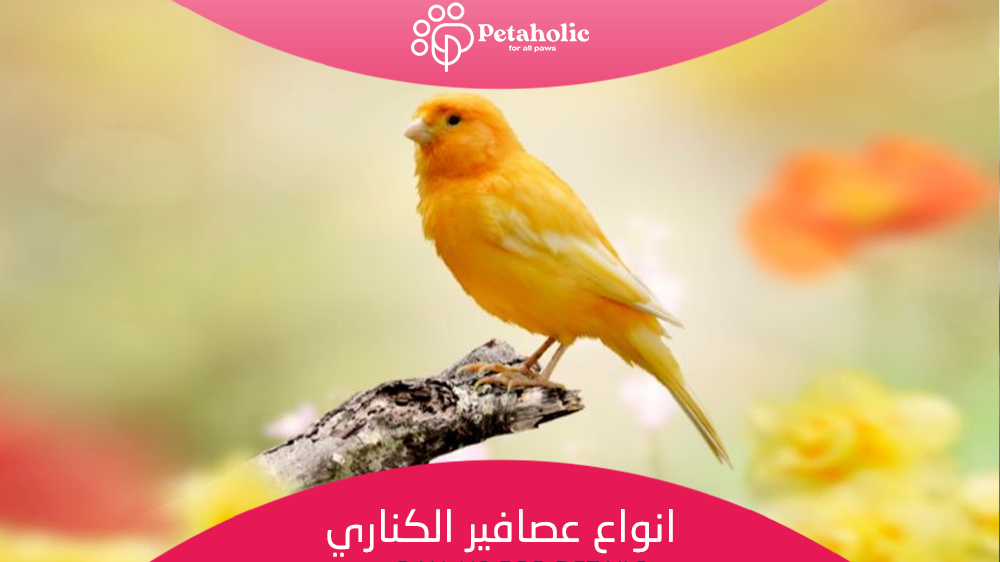
Canaries come in different shapes and sizes, but they all have one thing in common: they are beautiful birds that can light up any home. The many species of canaries are divided into three broad groups: Some are bred for their physical traits and shape, others for color, and others for their voice. In this guide, we will take a look at the types of canaries and what makes each one distinct from the other. We also provide you in our Betaholic store with all the requirements for canaries in order to save you the trouble of a long search.
What are the different types of canaries and what makes each one unique from the other?
Here are the most prominent types of canaries:
Atlantic canary
The Atlantic canary is found in large numbers in the Canary Islands, its primary habitat. It is also the most common type of canary raised in homes. This species is distinguished from other canaries by its wonderful voice. You can easily identify an Atlantic canary by looking at its physical appearance. Its length ranges from 10 cm to 12 cm. Its wingspan is between 21 cm and 23.7 cm. Males have largely yellow and green underparts and heads. Their forehead, eyebrows, and face are slightly yellow. But under the cover and lower abdomen, it is somewhat white, with dark lines appearing on the sides. Also, the upperparts appear yellow-green with some dark streaks. The rump of the wild Atlantic canary is also pale yellow.
Females look somewhat similar to males, but their heads and chests are grayer and duller with fewer yellow underparts. Juvenile Atlantic canaries are usually brown with a few dark stripes. These birds feed on insects and seeds, but their young feed mainly on insects. Their nests are made of straw, spider webs, and moss.
Blue canary
Most canaries in this category have distinctive features that set them apart. They have a yellow or white base color and these colors are usually tinted with some light, which plays tricks on you by making you see those colors completely different! This phenomenon often occurs when canary feathers reflect certain wavelengths of light in a way that causes several colors to appear. The colors produced are usually purple and green pigments. In most yellow-based canaries, the resulting color is green, but in white canaries, it appears bluish-gray, hence the term blue canary.
Fancy border canary
The ideal length for a Fancy Border Canary is 14 cm. These birds are small and very cute. They have round bodies with shiny feathers. Coming back to their plumage, these birds display smooth, shiny yellow feathers, but you can find them in a variety of colors. Colors include green, orange, white, or cinnamon. These birds emit a variety of songs with their voices when kept in cages, as they love to sing all the time.
Gloucester canary
The Gloucester Canary is recognized by a variety of colours, such as orange or yellow with some shades of red and cinnamon. But the ideal color for these birds is dark red-brown plumage, glowing in a subtle mixture of pink and light brown. So they are also known as cinnamon canaries. This rare species of canary is highly prized for the quality of its magnificent plumage. Some bird owners also believe that the Gloucester canary has the finest and softest feathers among all other types of canaries. Therefore, they are considered show birds. In addition, these birds have a wig of feathers on top of their heads; Which makes it unique among other canary species.
Domed or crested canary
Many bird owners and breeders love the mutahed canary for its exceptional physical characteristics. Their crests make them stand out from other canaries by their color or voice. This species is one of the varieties of canaries with a tuft of feathers on the top of their heads. In the past, crested canaries were bred only by the wealthy, due to their great popularity. As such, its price was far beyond the reach of ordinary people. Today, most crested canaries are available in different colors with great personality and a pleasing appearance to look at. Crested canaries reach a body length of about 17 cm, and have short, broad heads with prominent foreheads. You can recognize it by its rather long neck and long, narrow tail that is in line with its back.
The domestic canary is one of the most beautiful types of canary birds
This type of canary is a domesticated variety of wild canaries. These fashionable pet birds were bred in the royal courts of Spain and England before spreading to other regions. The domestic canary can grow to a size of 12 to 20 cm. Its colors can also vary from white, red, and brown to black, yellow, and orange. In addition, it produces a variety of soft and loud melodies and songs. As for their diet, it consists of grasses, fig seeds, and a variety of small plants and insects.
Some of the best foods we recommend for your canaries from our store are:
By the end of this guide, you will have sufficient information about the types of canaries, their most important characteristics, and their differences from each other, and you will be able to make a sound decision about the type of canary you want to raise at home. But whichever species you choose, all canaries have some of the most desirable traits not found in other birds. We also provide you in our store with all the bird supplies and canary food so that you can prepare your home to receive them.
You may also be interested in:

